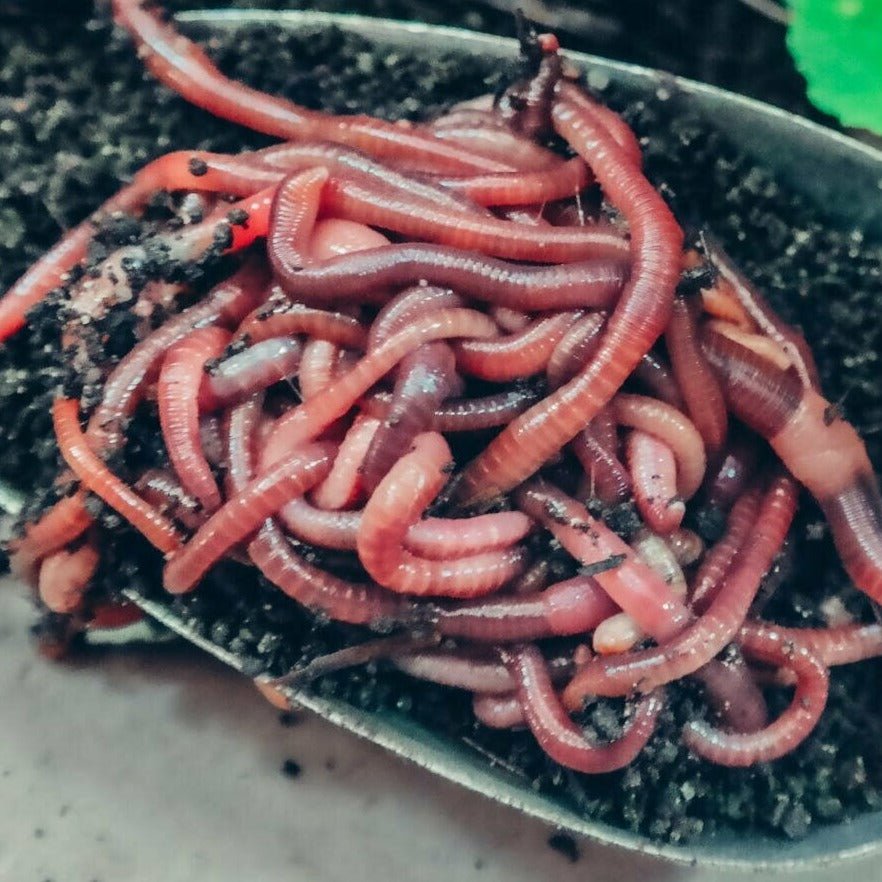Red Wiggler Worms Demystified: Unlocking the Tricks of Vermiculture for Greener Living and Nutrient-Rich Soil
In the world of lasting techniques for improving dirt top quality and promoting eco-conscious living, red wiggler worms play a pivotal yet commonly neglected duty. Red Wiggler Worms. Comprehending the details of caring for these worms, maximizing their atmosphere, and harnessing their castings can lead to a greener way of living and healthier dirt for plants to prosper.
The Function of Red Wiggler Worms
Red Wiggler worms play an important role in composting systems by successfully damaging down natural matter into nutrient-rich castings. These starved eaters take in a selection of organic products, such as kitchen area scraps, lawn waste, and paper products. As they feed, the worms' digestive processes break down the raw material into a penalty, dark, and nutrient-dense material called worm castings or vermicompost.
The spreadings produced by Red Wiggler worms are very valuable for dirt health and wellness and plant growth. They are rich in important nutrients like phosphorus, nitrogen, and potassium, which are crucial for sustaining healthy plant development. Additionally, worm castings have valuable microorganisms and enzymes that assist improve dirt framework, rise water retention, and enhance nutrient uptake by plants.
Benefits of Vermicomposting

Additionally, vermicompost, the nutrient-rich end item of vermicomposting, works as an exceptional natural fertilizer and dirt conditioner. It enhances dirt structure, improves dirt aeration, and enhances dirt wetness retention. These residential properties add to much healthier plants with more powerful origin systems and far better resistance to illness and bugs. Vermicompost likewise enriches the soil with crucial nutrients like nitrogen, phosphorus, and potassium, advertising plant development and general dirt fertility.
Additionally, vermicomposting supports sustainable gardening methods by giving a all-natural and chemical-free option to synthetic fertilizers. Red Wiggler Worms. This eco-friendly technique not only enriches the dirt however also helps lower dependence on damaging chemicals, promoting a greener and much more sustainable way of horticulture
Establishing a Worm Container
When establishing a worm bin for vermicomposting, appropriate configuration is important to guarantee the success of the composting process. The first step in establishing up a worm container is selecting an ideal container.
After adding the bedding, introduce the red wiggler worms to the container. It is suggested to begin with a handful of worms and gradually increase as they multiply. The worms need to after that be supplied with food scraps such as fruit and vegetable peels, coffee premises, and eggshells. It is necessary to stay clear of adding meat, dairy, oily, or salted foods to prevent drawing in parasites and developing undesirable smells.
Regularly check the dampness levels and temperature in the worm bin to ensure optimum problems for the worms. With appropriate arrangement and maintenance, the worm bin will successfully transform organic waste into nutrient-rich compost for your plants and garden.
Harvesting Worm Castings
To efficiently gather nutrient-rich worm castings from your vermicomposting system, a methodical harvesting method is essential. When it comes time to harvest the worm castings, there are a few crucial steps to comply with to make sure a successful process. Firstly, stop including fresh food scraps away of the worm container for a number of weeks before gathering. This encourages the worms to migrate sideways with fresh bedding and food, making it simpler to scoop out the castings from the various other side.

Troubleshooting Common Issues
Determining and resolving usual difficulties that might arise throughout the vermicomposting process is crucial for keeping a healthy and balanced and effective worm bin. Including excess food scraps can lead to a build-up of moisture and level of acidity in the worm container, potentially hurting the worms. Another issue is unpleasant odors rising from the worm bin.
Furthermore, if the worm populace is decreasing or the worms show up undesirable, it could be because of ecological stress factors such as severe temperatures or pH levels. Keeping an eye on these factors and making essential changes is necessary for the health of the worms. By fixing these typical problems quickly, vermicomposters can make certain a smooth and effective vermicomposting process while maintaining a thriving worm populace.

Final Thought
In verdict, red wiggler worms play a crucial function in vermiculture by breaking down natural matter into nutrient-rich soil. Setting up a worm bin is important link important for successful vermiculture, and gathering worm castings supplies useful compost for gardening.
As they feed, the worms' digestive system processes break down the natural issue right into a fine, dark, and nutrient-dense material known as worm castings or vermicompost.
The spreadings generated by Red Wiggler worms are very advantageous for soil wellness and plant development. Including excess food scraps can lead to a buildup of wetness and acidity in the worm container, possibly damaging the worms.Furthermore, if the worm populace is declining or the worms show up harmful, it can be due to ecological stressors such as extreme temperatures or pH levels. Establishing up a worm container is important for successful vermiculture, and gathering worm spreadings provides useful garden compost for gardening.